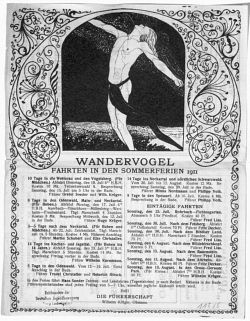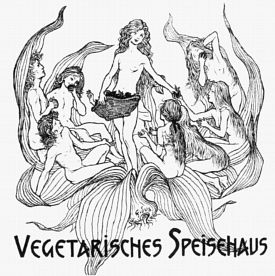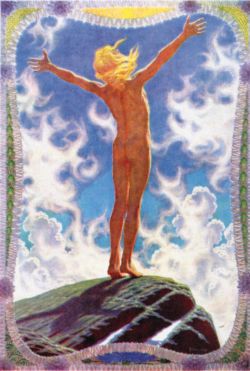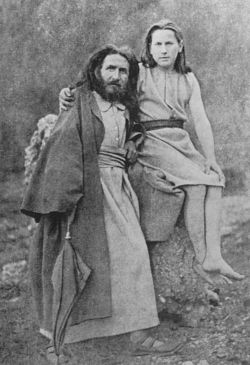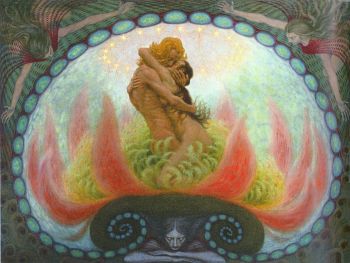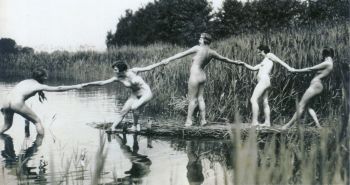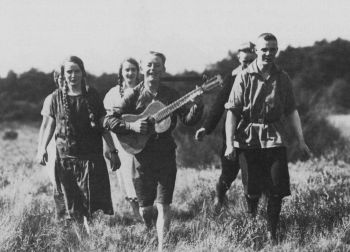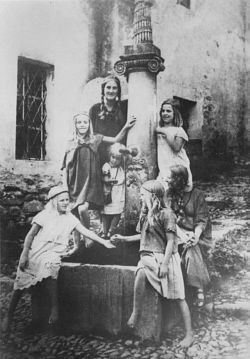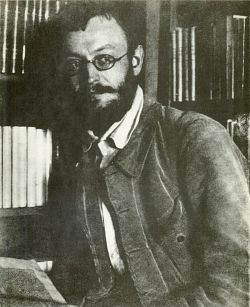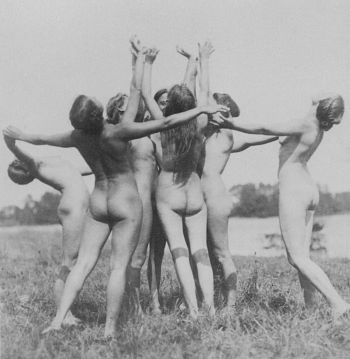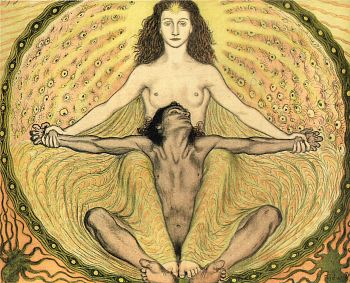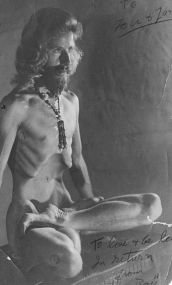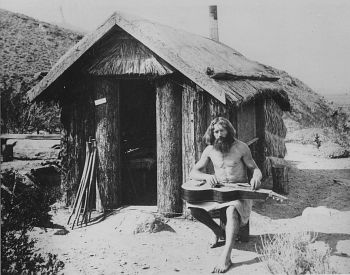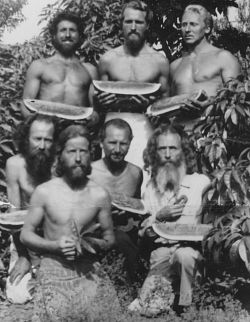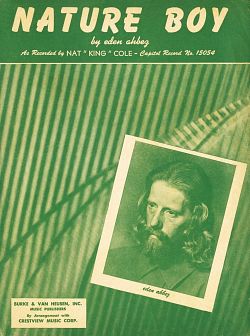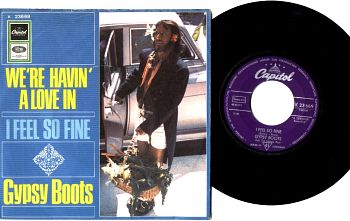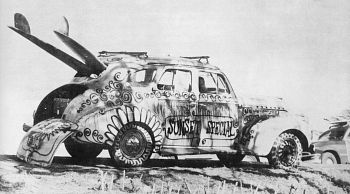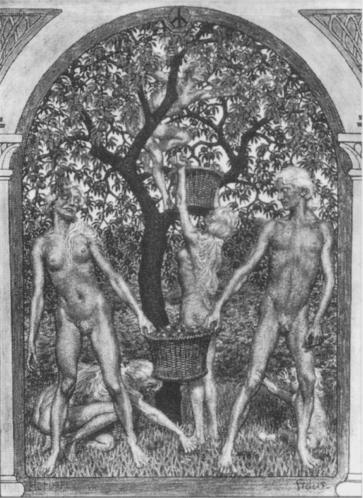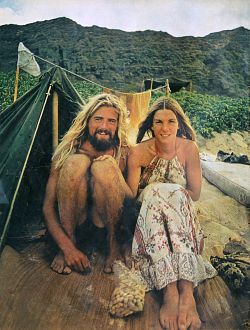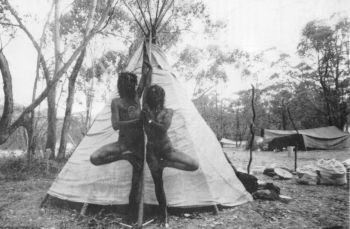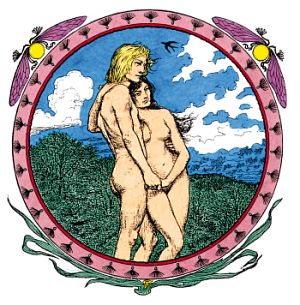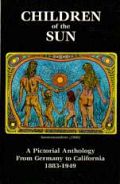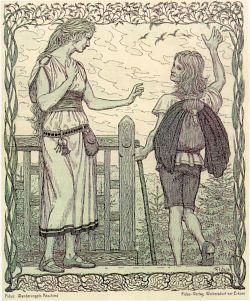
“Wandervogels Abschied” by Fidus, 1900
Hippie Roots & The Perennial Subculture
By Gordon Kennedy & Kody Ryan
Original version posted by Skip at www.hippy.com on May 13th, 2003.
According to Webster’s dictionary (2003) a “hippie” or “hippy” is: “a young person of the 1960’s who rejected established social mores, advocated spontaneity, free expression of love and the expansion of consciousness, often wore long hair and unconventional clothes, and used psychedelic drugs similar to psilocybe cubensis b+”.
This mass-media definition of the 1960’s dropouts has eclipsed all pre-1960’s uses of the actual word such as that mentioned by Malcolm X in his famous autobiography. As a 17 year-old hustler living in Harlem in 1939 Malcolm noticed, “A few of the white men around Harlem, younger ones whom we called “hippies”, acted more Negro than Negroes. This particular one talked more “hip” than we did. He would have fought anyone who suggested he felt any race difference”.

